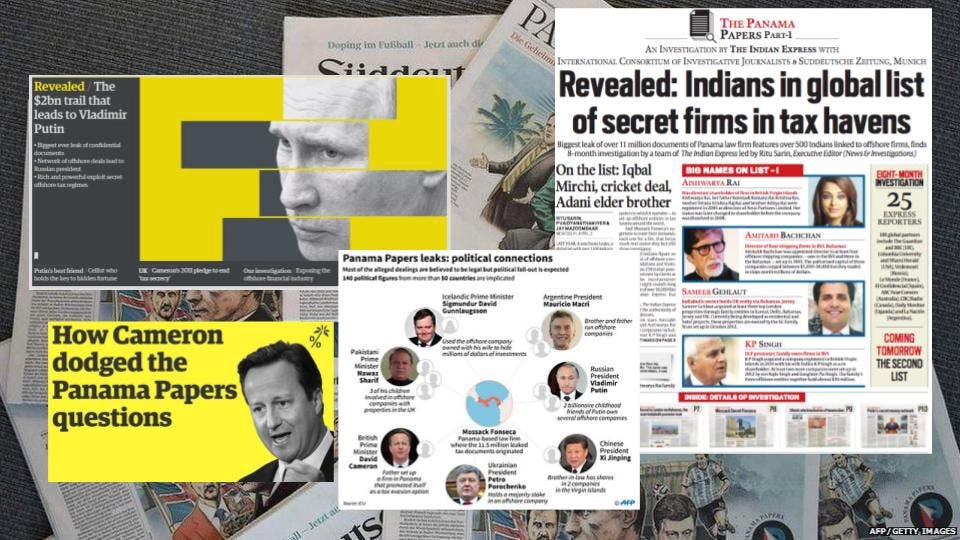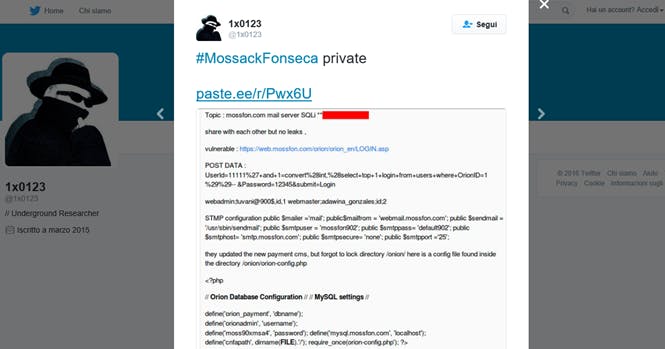The Assessment Team Compromises the Server to Vulnerable File Upload Functionality
UPDATE: This blog was originally published on 15 October 2021, and is updated to include the Log4j2 vulnerability as a existent life example of A06:2021 Vulnerable and Outdated Components.
What's new in 2021
- Three (iii) new categories made information technology to the Tiptop 10
- Some vulnerabilities have been renamed to better reflect the nature and scope of the vulnerabilities
- There is a new Number Ane
These are some real-life examples of each of the Top ten Vulnerabilities and Cyber Threats for 2021 according to The Open up Web Application Security Projection (OWASP).

- Broken Access Control (up from #five in 2020 to the peak spot in 2021)
- Cryptographic Failures (up from #3 in 2020 to #2 and was previously categorized every bit "Sensitive Information Exposure")
- Injection (previously #1 in 2020)
- Insecure Design (New category)
- Security Misconfiguration (upwardly ane identify from 2020 to #five)
- Vulnerable and Outdated Configurations (previously categorized as "Using Components with Known Vulnerabilities" and moved up from #nine in 2017)
- Identification and Authentication Failures (previously categorized as "Broken Authentication", slipped from #2)
- Software and Information Integrity Failures (New category)
- Security Logging and Monitoring Failures (previously categorized as "Insufficient Monitoring and Logging", upwards from #10)
- Server-Side Request Forgery (New category)
A01:2021 Broken Access Control
Broken Access Command happens when admission permissions are misconfigured thereby assuasive attackers to access, alter or delete data, files and accounts that they should not have access to in the get-go place.
Snapchat / Facebook Business (Jan 2014 / Aug 2015)
Snapchat
Gibson Security detailed vulnerabilities in the snapchat service, which was dismissed every bit a purely theoretical attack. A week later on, brute forcefulness enumeration had revealed 4.six meg usernames and phone numbers.
Why was this pregnant?
The set on seems to be motivated at least partly by Snapchat'south exclamation that the attack was theoretical, and they had not taken whatsoever action. This resulted in a data leakage of phone numbers and users details that could exist valuable for diverse uses.
Facebook Business Pages
Laxman Muthiyah found that information technology was possible for a malicious user to utilise a request to assign admin permissions to himself for a particular Facebook folio. A sample request tin can be seen beneath:
Asking :-
POST /<page_id>/userpermissions HTTP/one.i
Host : graph.facebook.com
Content-Length: 245
part=MANAGER&user=<target_user_id>&business organization=<associated_business_id>&access_token=<application_access_token>
Response :-
true
Why was this significant?
Concern pages are a widely used role, and by executing this attack, a malicious user could add himself as an administrator and deny access to the actual director or administrator.
How does this relate to Broken Access Control?
Both issues arose due to the lack of access control measures with a specific function provided.
A02:2021 Cryptographic Failures
Previously known as "Sensitive Data Exposure", cryptographic failures occur when sensitive data is comparatively protected and therefore leaked or exposed to unauthorized audiences. Such failures are most mutual if data is transmitted or stored in clear text or using knownhoped-for-weak cryptographic algorithms such as MD5 or SHA-1.
Cloudbleed (2017)
Google'southward Project Zero found an outcome in Cloudflare's edge servers made it possible to dump memory potentially containing sensitive data, some of which were cached past search engines. This security bug was named Cloudbleed.
Why was this significant?
Cloudflare had acknowledged the leak could have started as early as 22 September 2016, and a private key between Cloudflare machines had leaked. As nearly six 1000000 websites uses Cloudflare's services, and many spider web awarding defenses are built with the assumption of a secure TLS communication channel, the bear upon could be large. Estimates from Cloudflare state that between 22 September 2016 and 18 February 2017, the bug was triggered 1,242,071 times.
Cloudflare did a small sample written report, with a conviction level of 99% and a margin of mistake of two.v%, which showed a limited corporeality of sensitive data exposed.
- 67.54 Internal Cloudflare Headers
- 0.44 Cookies
- 0.04 Authorization Headers / Tokens
- 0 Passwords
- 0 Credit Cards / Bitcoin Addresses
- 0 Health Records
- 0 Social Security Numbers
- 0 Customer Encryption Keys
How does this chronicle to Cryptographic Failures?
This should be clear intuitively. The original flaw was due to the fashion broken html tags were parsed, causing information from a random portion of the server'south memory to be returned.
A03:2021 Injection
An attacker tin execute unintended commands or gain admission to sensitive data by injecting malicious data as part of a command or query. This usually happens when a website fails to filter, validate or sanitize users' inputs or implement parameterization.
The Panama Papers incident (Apr 2016)
The Panama Papers are a drove of eleven.5 million records from Mossack Fonseca, originally leaked to German journalist Bastian Obermyer in 2015. Due to the sheer size of the data, the International Consortium of Investigative Journalists were approached.
Why was this significant?
Many public figures, nowadays and past, had their financial dealings exposed, linking them to terrorists, drug cartels and revenue enhancement havens. Some public figures had their careers afflicted, and in some instances, the information directly led to public unrest.

AFP/Getty images, The Indian Express, The Guardian, Daily Mail service, whoar.co.nz
This is also significant from the cybersecuritycybersecurity point of view as it brought to attention the potential vulnerability and relative ease of attacking law firms, compared to the value of the information they behave. Fortune mag wrote a commentary piece "The Panama Papers Signal A New Kind of Cyber Assail", citing hacktivism every bit the motive, with income inequality as the reason. While not (actually) new, the incident did bring this to the public spotlight.
How does this relate to injection/using components with known vulnerabilities?
The documents were leaked in parts, and the site was hosted on outdated software, open to a big number of vulnerabilities. Unfortunately, due to the big number of possible attack vectors, it is hard to pivot downwardly the actual method used by the subject field(s) who leaked the information.
- WordPress iv.1 (Released Dec 18, 2014) — various vulnerabilities
- Revolution Slider Plugin — unauthenticated remote file upload via 'upload_plugin'
- WP SMTP Plugin — mail server login data stored in plaintext
- ALO EasyMail Newsletter plugin — mail server login data stored in plaintext
- Drupal 7.23 (Released Baronial viii, 2013) — 23 vulnerabilities, including code execution and privilege escalation via SQL injection of the Drupalgeddon fame
- Apache ii.ii.15, Oracle fork (March 6, 2010) — various vulnerabilities
- Microsoft Exchange / Outlook Spider web Access (2009) — diverse vulnerabilities
- A SQL injection SQL injection flaw was discovered by one×0123(Twitter) in their payment organization

Both the revolution slider'southward unauthenticated file upload, which could atomic number 82 to execution of PHP lawmaking, and the code execution via SQL injection on Drupal are petty to exploit have been pretty thoroughly taken reward of in the wild.
A04:2021 Insecure Design
Insecure blueprint is a new entry on the OWASP Top 10 in 2021. It is different from insecure implementation in that information technology has more to practice with risks related to design and architectural flaws. A secure implementation might have an insecure design which still renders a spider web application vulnerable to attacks and exploits.
One good example of insecure pattern in recent times prevented PC users and gamers from being able to purchase new Nvidia GPUs at recommended retail prices.
Many e-commerce sites did non factor in protection against bots that scalpers used to buy up their entire stocks which were express to start with.
Scalpers and then resold the cards at cut-throat marked upwardly prices on auction websites, meaning those who really needed to obtain a new GPU had to fork out prices that were many times higher than the recommended retail price.
A05:2021 Security Misconfiguration
This category covers a brand range of potential vulnerabilities including insecure default configurations, incomplete configurations, and misconfigured HTTP headers, using insecure default usernames and passwords, etc.
Amazon S3/Mirai (Now / Aug 2016)
Amazon S3
Notably, in recent years, in that location has been numerous organizations who failed to protect their Amazon S3 storage instance:
- Australian Broadcasting Corporation (November 2017) — Leakage of hashed passwords, keys and internal resources.
- United States Army Intelligence and Security Command (Nov 2017) — Diverse files, including Oracle Virtual Appliance (.ova). volumes with portions marked top hugger-mugger.
- Accenture (Sept 2017) — Authentication data, including certificates, keys, plaintext passwords, as well as sensitive client information.
There is an extremely high likelihood that similar issues will proceed to exist found.
Why was this pregnant?
A large number of organizations rely on Amazon's S3 data storage applied science, including governments and military machine organizations. From by examples found, this is a pervasive trouble and the information leaked often has a loftier impact on the organization affected. Having a CSPM solution when you take cloud infrastructurea CSPM solution when you take cloud infrastructure volition assist monitor common cloud misconfigurations.
Mirai(未来)
Mirai was a botnet utilising IoT devices, managing to execute several loftier profile attacks subsequently discovery, with the creator going to ground subsequently releasing the code as open source (Anna-senpai).
Why was this significant?
Mirai ran from CCTV cameras, DVRs and routers. Substantially worked by trying mutual passwords, something that can be easily avoided. The entirety of the countersign list used is included below:
With such a simple method, the Mirai botnet produced 280 Gbps and 130 Mpps in DDOS adequacy, attacking DNS provider Dyn, leading to inaccessibility of sites such equally GitHub, Twitter, Reddit, Netflix and Airbnb.
How does this relate to Security Misconfiguration?
Security misconfiguration can range from something as simple every bit allowing excessive permissions to a user account, to failing to restrict resource access to external addresses. In the cases mentioned above, they were caused by misconfiguration of the passwords protecting the systems.
A06:2021 Vulnerable and Outdated Components
This refers to known bug where vulnerabilities exist considering developers either do non know the versions of components used including those of nested dependencies, or are not aware that the software used is already unsupported or out of date.
Log4j2 Vulnerability (Dec 2021)
A Remote Code Execution (RCE) vulnerability in the Apache logging package Log4j2 versions 2.fourteen.1 and beneath was reported on ix Dec, 2021.
Why was this significant?
The Log4j2 library is an open-source logging library provided by the Apache Software Foundation that is commonly used in online applications and services to capture logs for development, operational, and security purposes.
Dozens of major online service providers such every bit Amazon, Microsoft, IBM and Google, employ the open-source library in their offerings.
Modern software development methodology drives the adoption of such software libraries, as in that location is no need to reinvent the bike, resulting in quicker go-to-marketplace. As a result, the library is sometimes embedded layers deep in applications.
The vulnerability required very little expertise to exploit. Threat actors only need to know how to parse a cord into a URL to take over servers to steal information and passwords, install malware and crypto-mining software, and even sell access to third parties such as Ransomware-as-a-Service (RaaS) providers.
Microsoft reported that State-sponsored RaaS and hackers are capitalizing on the Log4j2 vulnerability.
How does this chronicle to Vulnerable and Outdated Components?
The Apache Software Foundation released an update, Log4j 2.17.1 on 27 Dec, 2021 to address all known Log4j2 vulnerabilities to date. Below is the release history of updates:
- 2.15.0 6 December, 2021
- 2.16.0 thirteen Dec, 2021
- ii.17.0 17 December, 2021
- 2.17.1 27 December, 2021
Log4j ii.16.0 was found to be vulnerable to DoS attacks, prompting the release of version 2.17.0 to address the new vulnerability.
The widespread utilise of the Log4j2 library means eradicating the threat will be a long-term exercise.
Besides applying patches from vendors and updating your Log4j2 versions, yous can also conduct a compromise assessmentcompromise cess to ensure that you are non already compromised, and behave out penetration testingpenetration testing to test your network and endpoints.
Y'all can even go one step further to make less exploitation less likely while you are updating Log4j2 by deploying a CSPM such equally WardenWarden that will help identify vulnerable workloads and act every bit defense-in-depthhelp identify vulnerable workloads and act every bit defense-in-depth to break a chain of assail in the event a vulnerable Log4j2 instance exists.
A07:2021 Identification and Authentication Failures
Previously known as "Cleaved Authentication", this category covers weaknesses in authentication and session management in web applications. The resulting vulnerabilities allow attackers to proceeds unauthorized admission to accounts and/or data.
Department of Acquirement Hack (2012)
A foreign hacker was reported to have stolen 387,000 credit menu numbers and 3.6 million Social Security numbers from the South Carolina Department of Acquirement.
Why was this pregnant?
IRS was hacked over again in 2015, exposing people's social security numbers, address, incomes to more than 700,000 peopleexposing people's social security numbers, accost, incomes to more than 700,000 people. This information was then farther used to authenticate themselves to get transcripts of their victims, resulting in more exposed data.
Even though in the first instance credit card information was encrypted, social security numbers and other personally identifiable data were non.
Direct consequences of this incident would be the exposure of these people to identity fraud. The 2017 Identity Fraud Study found that $16 billion was stolen from xv.4 million U.S. consumers in 2016, and in the past six years identity thieves have stolen over $107 billionthieves accept stolen over $107 billion.
How does this relate to Identification and Authentication Failures?
The kickoff breach in 2012 resulted from the default password set in the authentication layer. In addition, the lack of encryption on some sensitive data fields including the social security numbers increased the impact of this incident.
A08:2021 Software and Data Integrity Failures
This is the second new category in the Top 10 in 2021, and is concerned with the failure to verify the integrity of software updates and patches prior to implementation on live applications and servers.
Perhaps the nearly high-contour example of this would be the SolarWinds cyber attack in 2020.
SolarWinds, based in Texas, United States of America, provides a platform chosen "Onion" which helps numerous companies, many of which are Fortune 500 companies and include government agencies such as the Pentagon, to manage their IT resources.
Hackers managed to hack into the "Onion" and added malicious code which was undetected. As a outcome, SolarWinds unwittingly sent out updates and patches with the malicious code to its customer base. These compromised updates/patches then created backdoors which the attackers and so used to install more than malware to spy on the affected companies and government agencies.
A09:2021 Security Logging and Monitoring Failures
Previously categorized as "Insufficient Logging and Monitoring", Security Logging and Monitoring Failures moved i place up from #ten this year. Logging and monitoring are essential components in ensuring that any suspicious activity tin exist detected close to real-time, or diagnosed after the fact.
Failure to go on sufficient records in these areas could subsequently lead to slower incident responses, thereby accentuating the potential amercement of breaches.
Unfortunately, this is an extremely mutual issue and one that often does not come to attention unless the visitor experiences an incident and is unable to triage or diagnose it.
A10:2021 Server-Side Request Forgery (SSRF)
This is the tertiary and concluding new entry into the Top 10 in 2021. Server-Side Request Forgery (SSRF) occurs when a spider web application proceeds to fetch information without showtime validating user-supplied URL.
In a bid to provide end-users with convenience, fetching data using a URL has become more common. The vulnerability allows an attacker to compel the web application to send a crafted request to unexpected destinations even when adequately protected by firewalls, VPNs and Network Access Command List (ACL).
There are two types of SSRF -- basic and blind.
A basic SSRF occurs when a victim server sends data dorsum to the assailant afterward the latter sends a URL request to the server. A blind SSRF occurs when attackers are able to change information or trigger some action on the victim server.
Both types of SSRF can outcome in data exposure, internal recon, a Denial-of-Service assault and Remote Code Execution (RCE).
What savage out of the Top 10?
Although these categories accept lost their places on the Acme ten listing, it does not mean that they no longer exist or are any less of a threat. Organizations volition do well to continue monitoring and deploying appropriate measures to mitigate these existing threats.
XML External Entities (XXE)
Android Studio, Eclipse, IntelliJ IDEA, APKTool (2017)
Check Betoken's research squad found vulnerabilities in pop Android development and reverse engineering tools used by developers, engineers and researchers. The bug found could lead to data exposure, as well every bit malicious users taking over the devices running APKTool.
The proof-of-concept attack immune showed that a malicious user could inject the malicious code into shared online repositories such equally those on GitHub, and allow the malicious user to obtain files available on the device reading the code. Similarly, the popular compiler APKTool has a vulnerability in the configuration yml file, assuasive files to extracted anywhere on the system running it.
Why was this significant?
This vulnerabilities could exist used to target programmer's machines and servers attempting to load, run, or decompile lawmaking.
In the evolution community, lawmaking or libraries are often shared in open up source repositories, and a attack similar this could result in sensitive documents such equally credentials and source code to be exposed. Developers using these popular IDEs could exist led to leak sensitive files in this manner.
In the 2nd scenario, the APKTool exploit tin lead to Remote Code Execution and allowing a remote malicious user to take control of the machine. For example, extracting a PHP exploit and calling the web server to run information technology.
How does this chronicle to XML External Entities (XXE)?
Both attacks are due to the style XML and YML(a similar human-readable information format) is parsed/read. The external reference contained in the XML is processed without further checks, leading to the above problems.
Cross Site Scripting (XSS)
Steam Profile Hack (February 2017)
This was a unproblematic XSS hack that was discovered on the Steam platform, on user's profile pages.

Why was this significant?
While the Steam profile page feature has existed for many years now, this relatively easy to execute hack was only discovered after a long period of time. The potential impact of this hack is well summarised past Reddit commenter "R3TR1X" and Moderator "DirtDiglett":
- Redirecting a user to a website to phish their login.
- Utilizing CSS trickery to alter your profile to trick users.
- Loading larger payloads
- Silently draining your Steam Wallet funds.
- Spreading Malware via an automobile-download.
How does this chronicle to Cantankerous Site Scripting (XSS)?
The vulnerability is a simple XSS flaw, where JavaScript can be input by a user to the contour page, and be executed on the viewer's browser. This situation is the perfect example of how an innocuous part tin can hide a potentially damaging flaw for many years due to a pocket-size mistake by a developer or security tester. A simple encoding of user input and brandish could accept prevented this.
Insecure Deserialization
Apache Struts 2 (Sep 2017)
Apache Struts 2, a popular framework used by many enterprise applications, was found to have a Remote Code Execution vulnerability, which could lead to malicious users gaining command over machines running these applications.
Why was this significant?
This issue affects every version of Struts using the REST plugin since 2008, and can exist exploited by sending a crafted request remotely. This would allow a remote attacker to run arbitrary code on the car. Java, and specifically the Struts framework, is popular inside the enterprise environs, and this exploit could lead to loftier adventure bug to the companies involved.
How does this relate to Insecure Deserialization?
The vulnerability is due to the XStreamHandler in the Remainder plugin, and the failure to filter file types from data sent from untrusted source.
Final thoughts
The OWASP Top 10 listing is only a literal tip-of-the-iceberg representation of the increasing number of cyber threats facing us today. This list is expected to change as nosotros run across more transformations in the ways we piece of work, play, and live our lives in these interesting times.
For example, increased adoption of the cloud and the advent of new technologies like 5G will probable present more attack surfaces and therefore more than cybersecurity challenges to organizations and individuals.
At the finish of the day, cybersecurity affects all of the states. We should therefore take an awareness of the potential harm to our digital lives.
If your system is looking for a cybersecurity partner to assist secure your business critical assets, contact uscontact usa for a give-and-take.
Originally written by QuanHeng LimQuanHeng Lim
hendersonorde1940.blogspot.com
Source: https://www.horangi.com/blog/real-life-examples-of-web-vulnerabilities
0 Response to "The Assessment Team Compromises the Server to Vulnerable File Upload Functionality"
Post a Comment